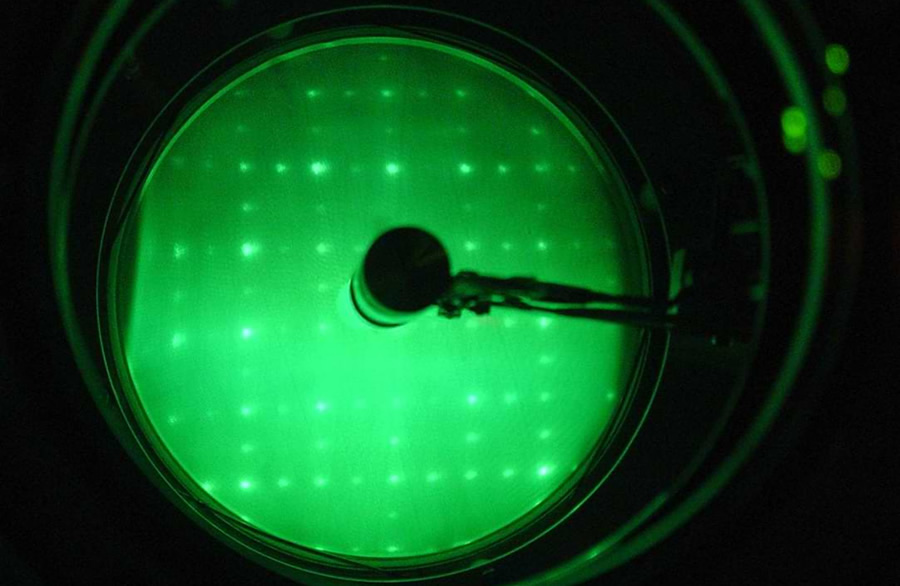
Low energy electron interactions with gas-phase molecules for pharmaceutical applications
A trochoidal electron monochromator coupled with an orthogonal reflectron time-of-flight mass spectrometer to monitor LEE interactions.
BACKGROUND
Low energy electrons (LEEs) play an important role in molecular chemistry, and reactions triggered by electrons can determine fragmentation routes and represent a tool in drug design or potentially improve strategies in radiation therapies. In order to investigate the underlying processes, a unique setup in Europe is being assembled and optimized. This setup is composed by a trochoidal electron monochromator (TEM) coupled with an orthogonal reflectron time-of-flight mass spectrometer (r-ToF MS).Low energy (− + AB → A + B−, where AB represents a polyatomic molecule. Additionally, LEEs have already been demonstrated to be implicated in the radio-sensitization of DNA, in treatments that combine the injection of several drugs (e.g., 5-FU or capecitabine) and radiation. In the Atomic and Molecular Collisions Laboratory, one of the research areas is the understanding of LEEs interactions in gas phase target molecules. An innovative experimental setup is being developed and installed to perform this research studies. The experimental setup consists of an electron trochoidal monochromator for irradiation, an orthogonal reflectron time-of-flight mass spectrometer for the ionic fragment detection.
TECHNOLOGY OVERVIEW
The described setup is almost fully operable which will allow studies of the completion of electron interaction with isolated gas phase target molecules studies.
- The trochoidal electron monochromator consists of a set of electrostatic lenses supplied by stable and precise power supplies;
- Free electrons are emitted from a tungsten filament and a mono-energetic electron beam is produced due to an electric field orthogonal to the magnetic field (Figure 1, Figure 2);
- Both ionization and DEA take place depending on incident electron energy;
- The formed cationic and anionic species are extracted into a mass spectrometer that will mass analyse the ionic fragments as a function of incident electron energy.


FURTHER DETAILS
- Electron-induced reactions in 3-bromo-pyruvic acid, F. Ferreira da Silva, M. T. do N. Varella, N.C. Jones, S. V. Hoffmann, S. Denifl, I. Bald, and J. Kopyra, Chemistry – A European Journal, 25,5498-5506 (2019);
- The effect of solvation in electron attachment to pure and hydrated pyrimidine clusters, M.Neustetter, J. Aysina, F. Ferreira da Silva and S. Denifl, Angewandte Chem. Int. Ed, 54, 9124-9126 (2015). IF: 11.261; corresponding author;
- Sensitizing DNA to secondary electron damage: Resonant formation of oxidative radicals from 5-halouracils, H. Abdoul-Carime, M.A. Huels, E. Illenberger, L. Sanche, J. Am. Chem. Soc. 123,5354 (2001).
STAGE OF DEVELOPMENT
- Prototype scaled and drawn in SOLIDWORKS® CAD 3D;
- Electron simulations performed using SIMION® Ion and Electron Optics Simulator;
- Trochoidal electron monochromator assembled and optimized;
- Reflectron time of flight mass spectrometer is being built and further optimized.
BENEFITS
- The electron beam presents an energy resolution around 100 meV;
- Fast data acquisition compared to similar experimental setups;
- New insights in chemical reactions at the molecular level.
APPLICATIONS
- The understanding of fragmentation patterns of drugs as a tool in drug design;
- Improve strategies in radiation therapies;
- Development of new radio-sensitizers.
OPPORTUNITY
- Support and partnership with chemical and pharmaceutical companies;
- Training researchers in physical and chemical related expertise fields;
- Boosting the cooperation between fundamental chemical physics and applied technologies.
SEEKING
- Development partner.
INTELLECTUAL PROPERTY
- Know-how based.
NOVA Inventors
Filipe Ferreira da Silva


